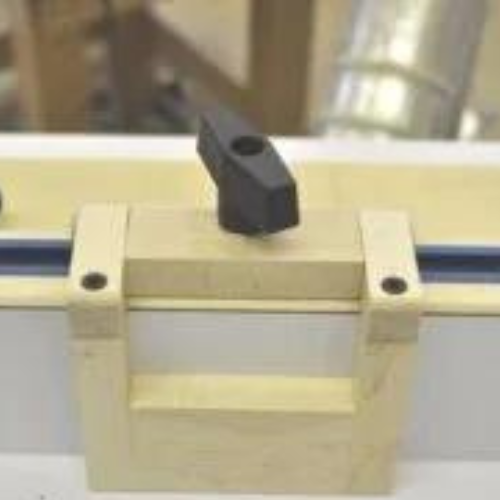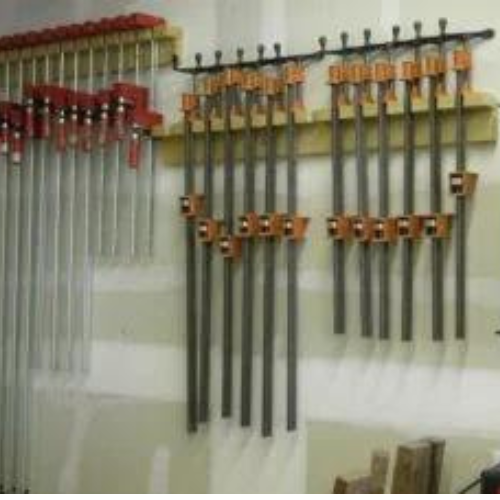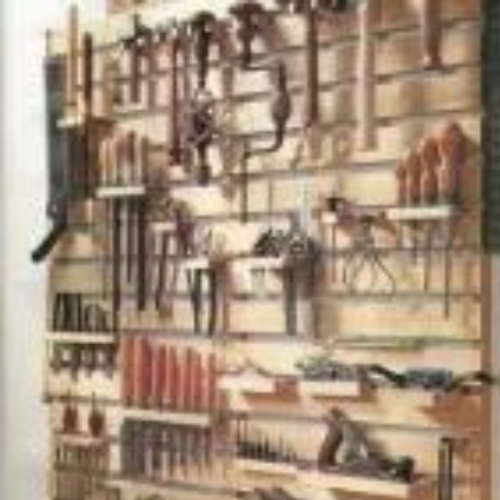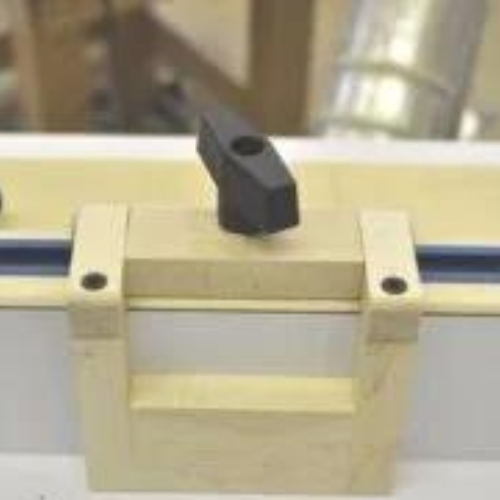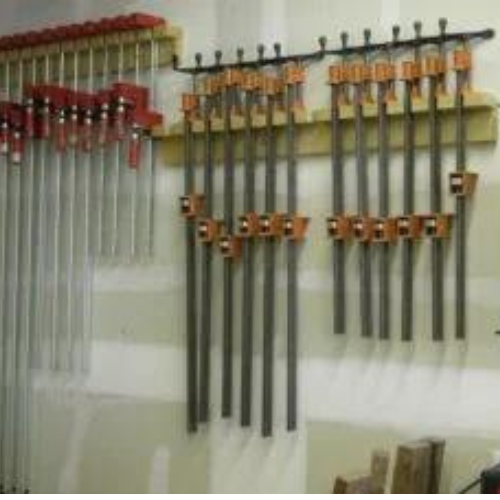Brad-point drill bits are the best drill bits for drilling accurately centered holes in woods. This is because it has a fine center point on the bit so it can be aligned on the exact point you want to drill your holes. V-point drill bits on the other hand commonly have a wide angle at the top of the tip (usually 118° or 135°) which makes it hard to align and stay on the center of your drill point. Also, V-point drill bits are more likely to wander while drilling. However, there is a technique in marking and drilling accurately centered holes which is applicable regardless of what tools you are using. For this example, let’s assume we are marking holes for shelf pints for a bookcase. This is a once in a lifetime project so you don’t need to invest in a shelf pin jig (a good thing to have if you are making numerous bookshelves or cabinets). First, you must accurately mark the place you want the holes. Use a sharp pencil. We’ll assume the sides of the bookshelf are approximately nine inches wide and the shelf pins will be placed one and one half inches from each side edge and two inches apart vertically. With an accurate tape measure, mark a point one and a half inches in from both edges at the top and bottom of the shelf side board. Never mark it using a straight line. Use a V to mark the exact drilling point.

Once marked, use a straight edge to connect the v-points from the top to the bottom of both sides of the side shelf edge.
 Another technique would be to use a combination square set so the ruler extrudes one and a half inches. Place your pencil at the edge of the ruler and then rag the square down the edge of the board keeping the pencil at the edge of the ruler. Using the same V marking technique place a mark every two inches along one of the vertical lines. Start about four inches from the top and end about four inches from the bottom. Next use a square and at each two inch mark scribe a line across both vertical lines keeping the square tight against the side board edge. Where the lines cross will be the center point for your shelf pins.
Another technique would be to use a combination square set so the ruler extrudes one and a half inches. Place your pencil at the edge of the ruler and then rag the square down the edge of the board keeping the pencil at the edge of the ruler. Using the same V marking technique place a mark every two inches along one of the vertical lines. Start about four inches from the top and end about four inches from the bottom. Next use a square and at each two inch mark scribe a line across both vertical lines keeping the square tight against the side board edge. Where the lines cross will be the center point for your shelf pins.
 Next, let’s center punch the hole locations. One of the handiest tools in your woodshop will be a spring loaded center punch. The best way to make sure the center punch is located exactly at the marked cross point is to align the punch point by starting with the punch almost parallel with the side board, rotating the tip of the center punch onto the marked cross point which will result in the punch being vertical to the side board (assuming your side shelf board is laying horizontal on a flat surface.
Next, let’s center punch the hole locations. One of the handiest tools in your woodshop will be a spring loaded center punch. The best way to make sure the center punch is located exactly at the marked cross point is to align the punch point by starting with the punch almost parallel with the side board, rotating the tip of the center punch onto the marked cross point which will result in the punch being vertical to the side board (assuming your side shelf board is laying horizontal on a flat surface.
 With a little practice, you can become very accurate in putting the center point of the punch exactly on the market cross point of the shelf side board. Once you have the punch in place, simply push down firmly on the punch and the spring action will put a v-point indent exactly where you want it.
With a little practice, you can become very accurate in putting the center point of the punch exactly on the market cross point of the shelf side board. Once you have the punch in place, simply push down firmly on the punch and the spring action will put a v-point indent exactly where you want it.

The next part is easy. Place the marked shelf side board on your drill press table with the size of brad-point drill bit you want for the shelf pins tightly inserted in the drill press chuck. Next set the drill press for the depth of the shelf pins (you don’t want to drill completely through the side shelf board). Turn the drill press on and slowly lower the fine point tip of the brad-point drill bit into the center punched indentation and then continue drilling the hole to the until it stops at the depth you set. If you don’t have a drill press, you can use a hand drill with a stop collar on the drill bit to control the depth of cut.
 Try to keep the drill bit as perpendicular to the board as possible. As a woodworker, accuracy is important. Using brad-point drill bits in your woodworking projects will assure greater accuracy in locating your drill holes. Using the marking, punching, and drilling techniques discussed above will help you achieve perfection in your woodworking projects. The marking techniques can be applied to all the measurements you make as a woodworker.
Try to keep the drill bit as perpendicular to the board as possible. As a woodworker, accuracy is important. Using brad-point drill bits in your woodworking projects will assure greater accuracy in locating your drill holes. Using the marking, punching, and drilling techniques discussed above will help you achieve perfection in your woodworking projects. The marking techniques can be applied to all the measurements you make as a woodworker.



